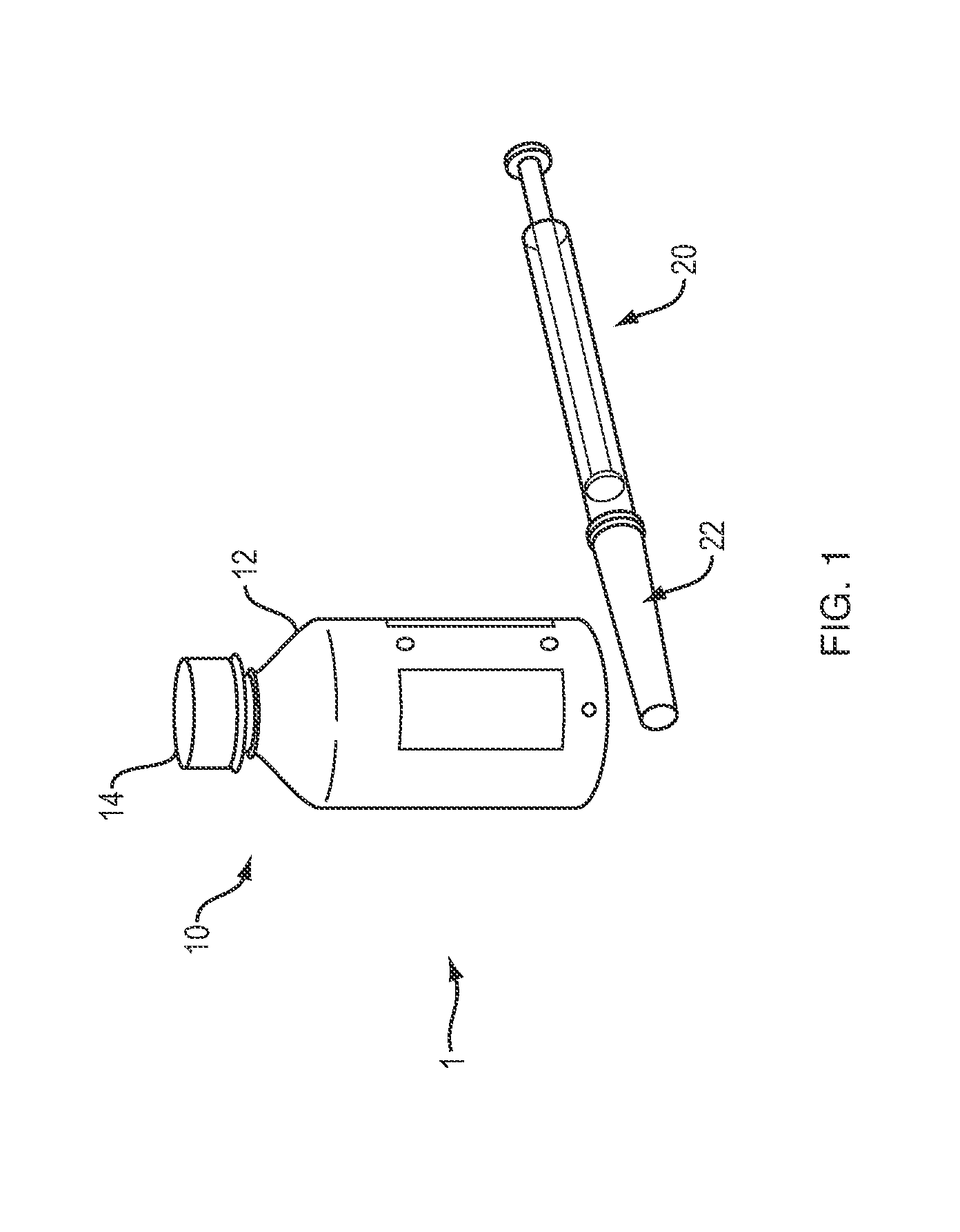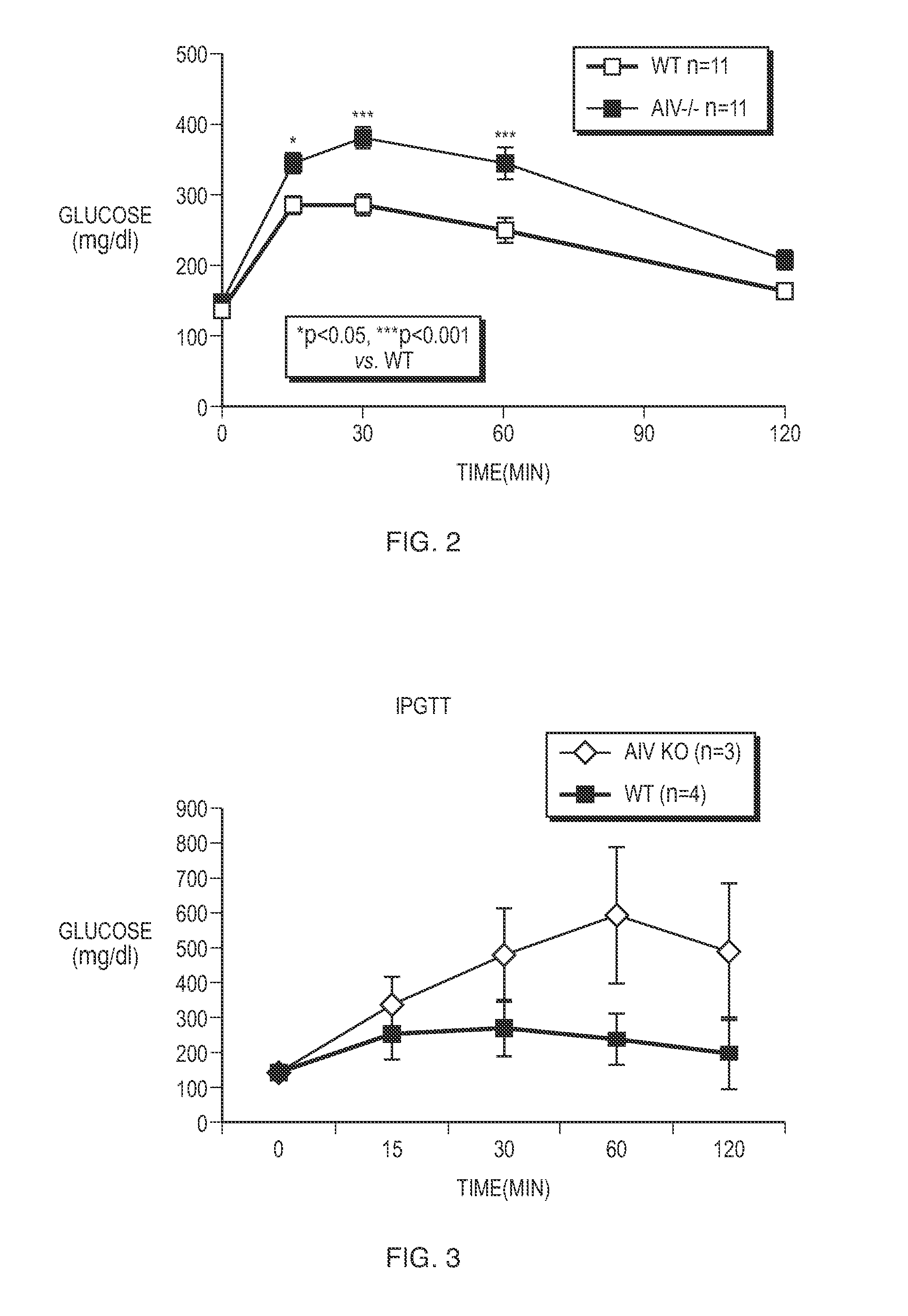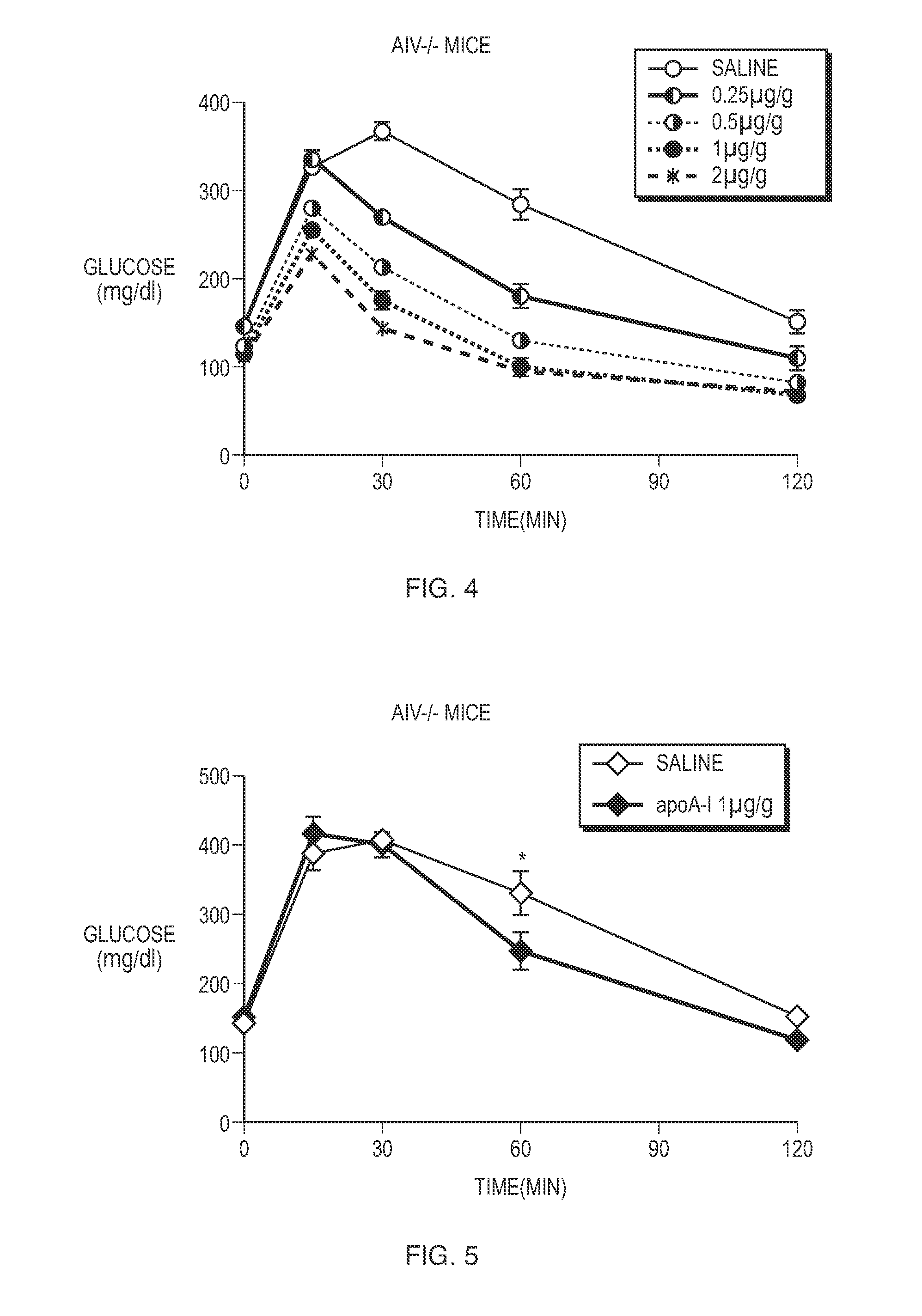Method of treating hyperglycemic disorders using apolipoprotein aiv
- Summary
- Abstract
- Description
- Claims
- Application Information
AI Technical Summary
Benefits of technology
Problems solved by technology
Method used
Image
Examples
example 1
Glucose Intolerance of ApoA-IV Knockout Mice
[0093]Experimental Protocol.
[0094]Male apoA-IV knockout (“hereinafter “KO”) mice were obtained. Wild-type (hereinafter “WT”) mice served as controls. ApoA-IV KO and WT mice were obtained from a colony kept at the University of Cincinnati (Cincinnati, Ohio). ApoA-IV KO and WT mice were fed a chow diet. Prior to performing the glucose tolerance tests, ApoA-IV KO mice and WT mice were fasted for five hours. In the glucose tolerance tests, the apoA-IV KO mice and WT mice were injected intraperitoneally with a dose of about 2 mg / g body weight of glucose and plasma glucose was measured at about 0, 15, 30, 60, and 120 minutes following the injection of glucose. The glucose tolerance tests were performed twice, once at three months of age and again at sixteen months of age.
[0095]Experimental Results.
[0096]As shown in FIG. 2, apoA-IV KO mice were glucose intolerant relative to the WT mice. Specifically, FIG. 2 shows that plasma glucose levels in WT...
example 2
Restoration of Glucose Tolerance in ApoA-IV Knockout Mice
[0099]Experimental Protocol.
[0100]Upon demonstrating that apoA-IV KO mice are glucose intolerant, a series of extensive studies were performed to determine whether administration of apoA-IV to apoA-IV KO mice would restore glucose tolerance to a normal level. Specifically, a series of studies were performed to determine not only the amount of apoA-IV to be administered but also the optimal time in which to administer apoA-IV prior to conducting glucose tolerance tests.
[0101]ApoA-IV male KO mice were injected intraperitoneally with doses of about 0.25, 0.5, 1, and 2 μg / g by weight of apoA-IV. ApoA-IV KO mice were also injected intraperitoneally with saline solution to serve as a control. Following injection with mouse apoA-IV or saline solution, glucose tolerance tests were conducted at three months of age as previously discussed. Specifically, glucose tolerance tests were conducted about two hours following injection with apoA...
example 3
Specificity of ApoA-IV in Restoring Glucose Tolerance in ApoA-IV Knockout Mice
[0104]Experimental Protocol.
[0105]In order to assess the specificity of apoA-IV, we administered apolipoprotein AI (hereinafter “apoA-I”) to apoA-IV KO mice. ApoA-I is a protein made by the small intestinal epithelial cells which also produce apoA-IV. ApoA-I shares many of the functions of apoA-IV. ApoA-IV KO mice were injected intraperitoneally with a dose of 1 μg / g by weight of apoA-I. ApoA-IV KO mice were also injected intraperitoneally with saline solution to serve as a control. Following injection with apoA-I or saline solution, glucose tolerance tests were conducted at three months of age as previously discussed. Specifically, glucose tolerance tests were conducted about two hours following injection with apoA-I or saline solution.
[0106]Experimental Results.
[0107]As shown in FIG. 5, the administration of apoA-I to apoA-IV KO mice failed to restore or improve glucose tolerance.
PUM
| Property | Measurement | Unit |
|---|---|---|
| Fraction | aaaaa | aaaaa |
| Fraction | aaaaa | aaaaa |
| Fraction | aaaaa | aaaaa |
Abstract
Description
Claims
Application Information
 Login to View More
Login to View More - R&D
- Intellectual Property
- Life Sciences
- Materials
- Tech Scout
- Unparalleled Data Quality
- Higher Quality Content
- 60% Fewer Hallucinations
Browse by: Latest US Patents, China's latest patents, Technical Efficacy Thesaurus, Application Domain, Technology Topic, Popular Technical Reports.
© 2025 PatSnap. All rights reserved.Legal|Privacy policy|Modern Slavery Act Transparency Statement|Sitemap|About US| Contact US: help@patsnap.com



